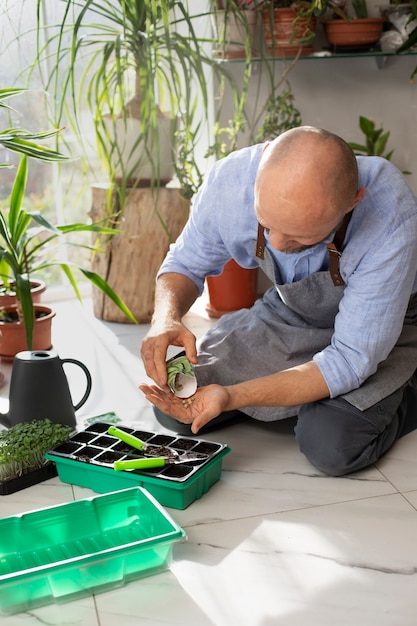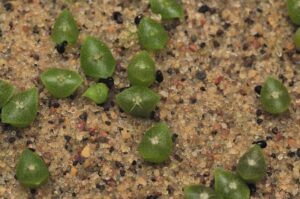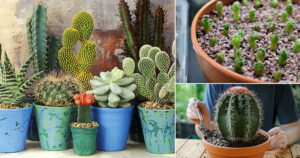Growing Cactus Plants Indoors: Secrets to Success
When it comes to indoor gardening, few plants embody resilience and beauty quite like cacti. Their unique adaptations allow them to thrive in environments that may not be conducive for other species. This article delves into the intricacies of indoor cactus cultivation, offering tips that not only optimize growth but also address common concerns of aspiring cactus enthusiasts.
Understanding Cacti: Nature’s Hardy Wonders
Cacti belong to the family Cactaceae, which primarily flourishes in arid and semi-arid regions. These plants have extraordinary adaptations; they store water in their tissues, possess spines instead of leaves, and often have specialized photosynthetic processes. It’s essential to appreciate these unique characteristics, as they influence how one should care for these delightful specimens indoors.
Environmental Factors: Lighting and Temperature Requirements
One major concern when growing cacti indoors is ensuring they receive adequate light. Natural sunlight is vital, as it directly influences the plant’s growth and health. Ideally, cacti should be positioned near a south-facing window where they can bask in bright, direct sunlight for a minimum of six hours daily. Lack of sufficient light can lead to etiolation, where cacti stretch out and become weak, significantly detracting from their aesthetic appeal.
Moreover, temperature variations can affect a cactus’s vitality. Most cacti thrive in environments with a temperature range of 70°F to 100°F during the day, and slightly cooler temperatures at night. However, they can tolerate lower temperatures, provided they are kept above freezing. It’s crucial to protect your cacti from frost and overly cool drafts, as this can lead to rot and other issues.
Watering Wisely: The Delicate Balance
Watering your indoor cactus can be perplexing, prompting many to question: how much is too much? Cacti are highly susceptible to overwatering, a leading cause of demise for these hardy plants. A general rule of thumb is to water only when the top inch of soil feels dry to the touch. During the growing season, typically spring and summer, cacti may require watering every two to three weeks. Conversely, during their dormant period in the fall and winter, the frequency should decrease to once every month, or even less.
Always opt for well-draining soil mixes specifically designed for cacti and succulents. These mixes promote aeration and prevent the roots from sitting in moisture, thereby reducing the likelihood of root rot. Additionally, ensure that your pots have drainage holes, as stagnant water can create an inhospitable environment for the roots.
Soil Essentials: Choosing the Right Medium
The substrate in which your cacti grow plays a pivotal role in their overall health. A lightweight and gritty medium allows for optimal drainage and aeration. Commercial cactus soil blends often contain sand, perlite, or pumice, which are ideal for mimicking natural conditions. If you prefer to create your own mix, combine equal parts of potting soil, sand, and perlite to foster an environment conducive to growth.
Fertilizing: The Nutritional Booster
Another aspect of cactus care that warrants attention is fertilization. While cacti are known for their minimalist nutrient requirements, providing them with periodic nourishment can enhance growth and flowering. During the active growing season, apply a diluted, balanced fertilizer formulated for cacti every four to six weeks. It’s paramount to refrain from fertilizing during the dormant months, as this can lead to damaging excess salt buildup in the soil.
Pest Control: Safeguarding Your Green Companions
Even the hardiest cacti are not immune to pests. Common indoor pests include mealybugs, spider mites, and scale insects. Regularly inspecting your plants is an effective way to catch infestations early. Neem oil or insecticidal soap can be employed to treat affected areas, ensuring you follow up with proper application methods. Maintaining air circulation around your cacti can also hinder pest proliferation.
Propagation: Expanding Your Cacti Collection
Propagation can be a fulfilling aspect of indoor cactus gardening. Depending on the species, cacti can be propagated through offsets (pups) or seeds. Offsets are small plants that grow from the base of the parent plant and can be easily removed and replanted. Seed propagation, while requiring more time and patience, can be an engaging project that showcases the plant’s growth journey. Always ensure that the soil used for propagation is well-draining, and maintain pristine conditions to encourage successful germination.
Conclusion: Cultivating Your Cactus Garden
As you embark on your indoor cactus-growing endeavor, remember that patience and observation are your best allies. Each cactus species may present unique needs, so it’s wise to research specific requirements tailored to your plants. By mastering light, water, soil, fertilization, and pest control, you will enjoy the eccentric beauty of these resilient plants for many years to come. With careful attention to their needs, your indoor oasis will flourish with the intriguing charm that cacti offer.





Leave a Comment